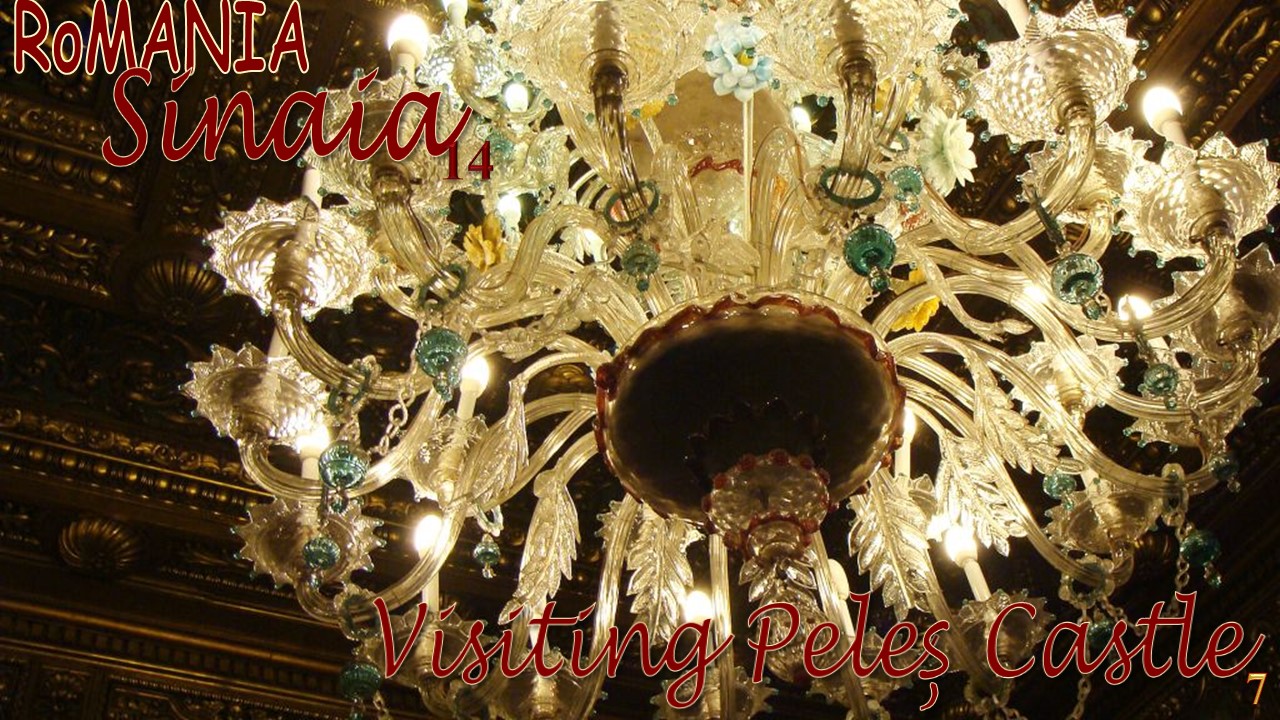Sinaia 14 Visiting Peles Castle7 - PowerPoint PPT Presentation
Title:
Sinaia 14 Visiting Peles Castle7
Description:
Peleș Castle is a Neo-Renaissance castle in the Carpathian Mountains, near Sinaia, in Romania, built at the wish of the first Romanian king, Carol I (1866-1914). This castle was used as a summer residence by the kings of Romania. The castle was a museum from its first years, opened when the royal family did not use it, the tickets sold financing Queen’s Elisabeta charity works. After the castle was confiscated by the communist regime, most of the art collections were transferred to various art museums – PowerPoint PPT presentation
Number of Views:6
Title: Sinaia 14 Visiting Peles Castle7
1
RoMANIA
Sinaia
14
Visiting Pele? Castle
7
2
Pele? Castle is a Neo-Renaissance castle in the
Carpathian Mountains, near Sinaia, in Romania.
This castle was used as a summer residence by the
kings of Romania, built at the wish of the first
Romanian king, Carol I (1866-1914). The
castle was a museum from its first years, opened
when the royal family did not use it, the tickets
sold financing Queens Elisabeta charity works.
After the castle was confiscated by the communist
regime, most of the art collections were
transferred to various art museums
www.flytoromania.com
3
The Florentine Room is the first room of three
used for reception and it was decorated between
1906-1910 in Italian Neo-Renaissance style
4
The chandeliers and the mirror are commissioned
to Murano workshops
5
Chandeliers and dishes made of colored glass of
Murano, made in the modern times, copy sumptuous
models of the 16th century
6
For the time, Pele? had very modern facilities.
The castle was extended to 160 rooms, several
entrances and staircases and since 1883 it
benefited of central heating. Due to its own
power plant, Pele? castle was the first
electrified castle in Europe
7
(No Transcript)
8
The bronze doors featuring allegorical characters
were made after the project of the Italian
architect Luigi Magni, their frames being made of
Paunazzo marble (a rare Italian marble)
9
(No Transcript)
10
(No Transcript)
11
(No Transcript)
12
(No Transcript)
13
(No Transcript)
14
(No Transcript)
15
(No Transcript)
16
(No Transcript)
17
The Paonazzo marble fireplace (Italy) is
decorated with bronze reductions, replicas
following Michelangelo's sculptures The Thinker,
Sunset, and Dawn executed for the Medici Chapel
in Florence, Italy
18
Bronze reductions, replicas following
Michelangelo's sculptures executed for the Medici
Chapel in Florence, Italy
19
(No Transcript)
20
The carved gold plated lime wood ceiling, having
in the center a painting after Giorgio Vasari
21
(No Transcript)
22
(No Transcript)
23
(No Transcript)
24
(No Transcript)
25
(No Transcript)
26
(No Transcript)
27
(No Transcript)
28
(No Transcript)
29
Caterina Cornaro, Ernst Klimt copy after Veronese
30
The inlaid paneling that covers the walls
31
Ars Scientia Bernhardt Ludwig door, marquetry,
various wood essences, 1906
32
(No Transcript)
33
Vigor Sator Bernhardt Ludwig door, 1906
34
(No Transcript)
35
(No Transcript)
36
(No Transcript)
37
(No Transcript)
38
(No Transcript)
39
(No Transcript)
40
A decorative technique, typical of the Italian
Renaissance was the inlay, already known from the
14th century, but refined after the mid 15th
century, when it became a real form of art
41
The technique of jigsaw from Florence made of
pietra dura (semi-precious stones and marble)
42
Table workshop A. Mengetti, carved wood, gilded,
pietra dura H 92 cm, 190 x 100 cm
43
(No Transcript)
44
The table with the top made of inlaid pietra dura
(semi-precious stones and marble) with a quadriga
in the central medallion, the column shaped legs
and sculpted gilded angels confirm the
exceptional value of the original piece at the
Uffizzi Museum in Florence
45
As pieces of remarkable value are also two
cabinets of ebony wood decorated with
semi-precious stones, Workshop Bernhard Ludwig,
Vienna, 19th century
46
(No Transcript)
47
(No Transcript)
48
(No Transcript)
49
(No Transcript)
50
(No Transcript)
51
(No Transcript)
52
(No Transcript)
53
(No Transcript)
54
(No Transcript)
55
What is really amazing is the density of objects
that are recognized as works of art so many
details that one could spend hours to watch
carefully all these masterpieces
56
Text Internet Pictures Sanda Foisoreanu
Internet Daniela
Iacob All copyrights belong to their respective
owners Presentation Sanda Foisoreanu
2019
Sound Franco Margola - Sonata per
violino e pianoforte n.1 (1931)

